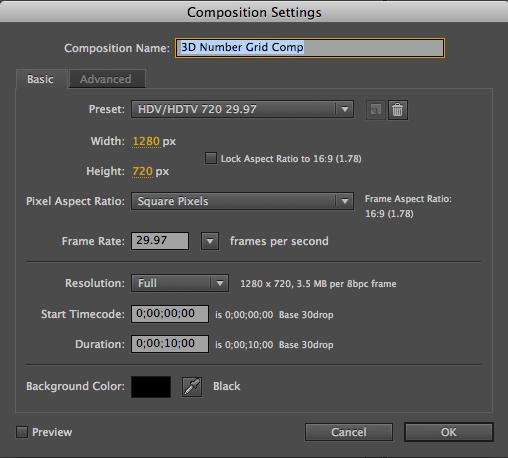
The following list covers common particle behavior and how you can influence it. To control the color for the lifespan of particles, create a layer map and use one of the Property Mappers to alter the color channels of the particles. If the source of the layer is a nested composition, you can set different Opacity values or In and Out points for the layers within the nested composition to make the exploding layer transparent at different points in time. If you want to start or stop a layer explosion, animate the Radius of New Particles control by using keyframes so that its value is zero at times when you don’t want particles to be created. By default, this creates a continuous shower of particles for the duration of the composition.


If you want text characters to appear at the grid position with normal spacing, use a text alignment other than the Use Grid option. If you’re using text characters as particles, the Use Grid option in the Edit Grid Text dialog box is on by default, placing each character on its own grid intersection, so normal character spacing, word spacing, and kerning do not apply. When a grid particle is created, it is centered over its grid intersection, regardless of whether it is a dot, a layer, or a text character. Specifies the rate at which bubbles decelerate after being released from the producer point, and controls the speed of the flow of the bubbles. If you select Zoom Producer Point, the point moves with the universe as it is zoomed out, and the point ends up closer to the center of the screen. For example, if you set a position for Producer Point in the upper-left corner of the layer and then zoom out on that layer, the producer point stays in the upper-left corner of the screen if you don’t select Zoom Producer Point. Specifies whether the producer point and all of its associated keyframes remain relative to the universe (selected) or to the screen (unselected) when you zoom in or out on it. Not every frame takes this long to calculate once Foam adjusts to the change, rendering speeds up again. Please let me know how I did and if you have any tips or corrections please leave a note.When making adjustments to Physics controls, the farther into the simulation you are, the longer the adjustments take to render, because each adjustment results in the simulation being recalculated all the way back to the beginning. So even though you might be saying, “I can make this effect happen in Particular in 5 minutes,” keep in mind there’s always another 90% out there. Which takes a bit of effort to learn compared to the plethora of turnkey particle generators out there, but I think it’s a good start for a tutorial since it encapsulates so much of digital compositing. So here is my first tutorial on Blurrypixel using an often overlooked particle effect in After Effects, Particle Playground. And that’s what learning is about, right? It may not be what I was expecting and it may be completely different than what I was studying, but it was always beneficial and always unexpected. But if I took the chance to look beyond my own “pretentiousness”, I would find there was always something invaluable to learn from them. At school there were always teachers who in all honesty were experts in their field simply because they knew 10% more about it than 10% of the students they were teaching.


 0 kommentar(er)
0 kommentar(er)
